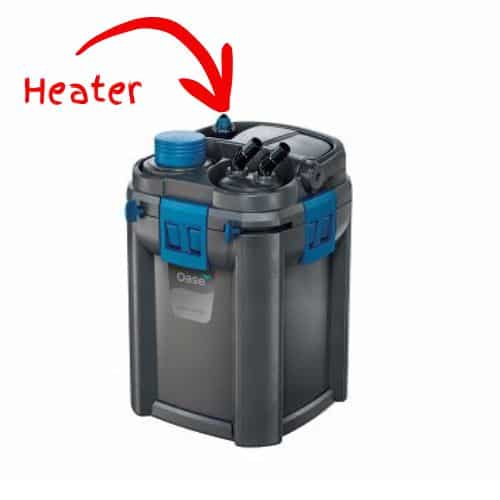💧 How Much Does a Fish Tank Really Cost to Run?
11 min read
- 💬 Why This Guide Exists
- 💭 The Reality of Fish Tank Running Costs
- 📜 A Quick Look Back: How It Used to Be
- ⚙️ What Drives the Running Cost Up
- 💸 What Can Keep Costs Down
- 🏭 Industry Variations
- 💳 Financing Options — Making It Manageable
- ⚖️ Typical Monthly Running Costs (2025 UK Averages)
- 🔁 Lifetime Cost vs Initial Price
- 🧮 Interactive Cost Calculator — See for Yourself
- 💬 Common Questions
- 🌱 Transparency & Trust
- 🎯 Final Thoughts
- 👉 Ready to Get Started?
- As promised!...My Grandad, Ron Cook a no-nonsense shopkeeper.
If you’ve ever stood in front of a beautiful aquarium thinking, “That looks amazing… I’d love one of those at home” — you’re not alone. Then the next thought hits: “Hang on… how much is this fish tank going to cost me to run?”

It’s a fair question. Fish tanks don’t just look after themselves, and while most people can easily find the price of a tank or filter, the ongoing running costs — electricity, consumables, maintenance — are where things get fuzzy.
So, let’s clear the water. This article lays out what to expect when it comes to running costs — from the small, simple tanks through to the big, showpiece aquariums — so you can make informed, realistic decisions before you take the plunge.
And just to make things even easier for you, we’ve built a Running Cost Calculator you can use to work out exactly how much your aquarium is (or will be) costing you to run. Or, if you prefer, you can completely ignore it and carry on enjoying your very own private Sea Life Centre — we won’t judge.
Don’t worry — this isn’t a sales pitch. I’ve written this as a fellow hobbyist who’s been up to the elbows in filter media more times than I’d like to admit.
💬 Why This Guide Exists #
If you’ve spent more than five minutes Googling aquarium running costs, you’ll have seen everything from suspiciously low estimates to wild exaggerations.
Our goal here isn’t to sell you anything — it’s to give you clarity.
We want you to understand exactly what’s involved, what it might cost, and how to make it as efficient and enjoyable as possible.
This guide is based on experience, not guesswork — years of setting up, maintaining, and troubleshooting aquariums of all shapes and sizes.
I have also included one of my favourite every anecdotes about my Grandad. As much as It makes me smile, it is absolutely no use to you whatsoever, so I have put it right at the bottom, I honestly couldn’t do an article that featured aquarium heaters so heavily, without including it.
We’ve learned what works, what’s worth paying extra for, and what you can safely ignore. So, think of this as an honest, pragmatic conversation between fellow aquarists — helping you build confidence and avoid expensive mistakes.
💭 The Reality of Fish Tank Running Costs #
It’s a subject that isn’t openly talked about and tends to grumble quietly beneath the surface — but I know it can have a big impact on customers. At one end of the spectrum are people who’ve got five, six, or even seven fish tanks dotted around their home, living in blissful ignorance of the running costs because their tanks bring them so much joy they simply don’t care.
At the other end are the people who don’t take the plunge because they don’t know how much it’s going to cost to run — and they’re worried about how it might affect their monthly bills.
The truth is, it might surprise you to know that running a fish tank isn’t that expensive. Running a fish shop, however, is a completely different kettle of fish.
Our electricity bill currently sits at around £7,000 a month, and that’s with us running hundreds of tanks and ponds side by side. We use every cost-saving tool available: LED lighting, insulation wherever possible, and low-running-cost DC pumps — and it’s still eye-wateringly high.
But the good news? The average home aquarium doesn’t even come close to that kind of power use.
Nearly every pump we sell these days is a low running cost DC pump — whether it’s part of a protein skimmer, a circulation pump, or an internal filter. Many of them run at less than 10 watts. The same goes for lighting: it’s all LED now. You’d struggle to find a fluorescent tube, although a few cheap starter kits still use them. Even then, while fluorescent lighting isn’t outrageously expensive to run, the bulbs do need replacing roughly once a year — and that’s where the cost starts to creep up.
The biggest inescapable factor in most aquariums — certainly tropical and marine — is the heater. You can’t escape the heater. It’s the one component sustaining your environment.
A good rule of thumb: one watt of energy per litre of water. So, a 300-litre aquarium needs a 300-watt heater.
To put that in perspective:
- A 300W heater, running 12 hours a day (roughly 50% of the time), costs around £6.64 per week to run.
- The lighting on that same tank might cost around £0.44 per week.
- The filter pump might cost about £0.66 per week.
So, together, the lighting and pump would cost roughly £1.10 per week — barely a fraction compared to the heater.
This comparison really shows how minimal the costs are for these components compared to heating, and it helps give a realistic picture of overall energy consumption.
📜 A Quick Look Back: How It Used to Be #
A decade or two ago, fishkeeping was noticeably cheaper. Glass was affordable, electricity was a fraction of the price it is now, and import costs were low.
Then came the big shifts:
- The cost of glass has risen sharply.
- Freight went from around $3,000 per 40ft container before COVID to over $25,000 at the peak — a staggering jump that rippled through the industry. It has come back down since, but still a larger consideration that it used to be.
- Energy prices have climbed dramatically, though the arrival of LED lighting and efficient pumps has softened the blow.
- Aquariums were definitely cheaper to run in the past, and it genuinely saddens me that so many people have sold off their fish tanks ( and ponds) as the energy crisis hit, because they were afraid of what they were costing to run. They may have had a handle on this, but I suspect they didn’t know exactly what the running cost was and it was just an easy target.
A friend of mine is a financial advisor, and he said he is always concerned that, in times of financial difficulty, people will stop their life insurance, in favour of keeping netflix. It seems crazy when you say it out loud, but we all need some enjoyment in our lives. I want to give you all the information you need ( and probably a lot more!) so that you can make the right decision about keeping fish as pets.
So yes, in short, tanks have become more expensive. But the equipment has become far more efficient and reliable — meaning lower long-term running costs and fewer nasty surprises.
⚙️ What Drives the Running Cost Up #
- Tank Size — Bigger tanks take more energy to heat, light, and filter.
- Lighting — High-output LEDs for reef or planted tanks use more power but provide better results.
- Heating — A must for tropical setups, and the single biggest factor in running cost. Demanding species like Discus need higher water temperatures, which means heaters work harder.
- Room Conditions — A cold or fluctuating room temperature, or an open-topped aquarium, means more heat loss and higher running costs.
- High-Energy Reef Lighting — Promoting coral growth requires strong lighting systems that consume more energy.
- Inefficient Circulation — Poor water movement causes temperature layering, making heaters work overtime to maintain stability.
💸 What Can Keep Costs Down #
- Coldwater or Temperate Tanks — No heater = instant savings.
- Efficient Equipment — Modern DC pumps and LEDs dramatically reduce running costs.
- Consistent Water Flow Around the Heater — Keeps heat distribution even, reducing the time the heater is active.
- Efficient System Design — Systems with sumps or external filters that include built-in heaters deliver heat more effectively.
- Titanium Heaters — Offer more efficient heat transfer than traditional glass-tube styles.
- Stable Room Temperature — A steady ambient temperature means less heater cycling.

💡 Pragmatic Tip: If you ever experience a power cut as a fish tank owner, you can reduce temperature loss by wrapping a blanket around the tank until the power returns. If you were that way inclined, you could do this every night to save a few pennies — but tucking your fish in might be a step too far!
🏭 Industry Variations #
While heaters heat and pumps pump, the efficiency with which they do so can have a noticeable impact on your energy bills. It’s worth investing in better quality equipment from the start.
Higher-grade heaters are usually more accurate, heat water more efficiently, and tend to last longer. The difference adds up over time — both in energy savings and reliability.
It’s also worth noting that heaters are generally one of the shortest-lived pieces of aquarium equipment, so investing in quality up front can prevent breakdowns and replacements later on.
💳 Financing Options — Making It Manageable #
Setting up an aquarium can add up quickly, and we understand that. Especially if you are planning on getting the equipment that looks after you financially in the long run. To make things easier, we offer 0% finance over 10 months on orders over £350. It may not be for everyone, but hopefully it’s reassuring to know it’s available.
It’s not there to push you into buying more — it’s simply a way to spread the cost of your setup and make the start of your fishkeeping journey a little more manageable.
⚖️ Typical Monthly Running Costs (2025 UK Averages) #
| Setup Type | Monthly Cost | Notes |
|---|---|---|
| Coldwater 60L tank | £5–£8 | Simple, low-maintenance |
| Tropical 100L tank | £10–£15 | Heater + light combo |
| Tropical 300L tank | £20–£30 | Mid-range setup |
| Reef 250L system | £30–£50+ | Lighting and dosing drive this |
| Monster tanks (600L+) | £60+ | Worth it if you love the drama |

(Based on 26.35p per kWh — October 2025 UK average electricity cost)
🔁 Lifetime Cost vs Initial Price #
A big part of budgeting isn’t just what you spend now — it’s what you’ll spend over time.
Buying cheap equipment often ends up more expensive in the long run. Quality lights, filters, and heaters last longer, run more efficiently, and usually come with longer warranties.
In short: spend wisely once, instead of badly twice.
🧮 Interactive Cost Calculator — See for Yourself #
We’ve built a free interactive calculator so you can estimate how much your fish tank would cost to run.
Pop in your heater size, lighting, and pumps — it’ll show you the weekly, monthly, or daily cost instantly, using real UK energy rates
Caveat: Calculations assume a UK electricity rate of 26.35p/kWh (editable) and these defaults: heater 50% duty, lights 8h/day, pumps 24h/day. Real costs vary with room temperature, insulation, stocking and maintenance.
💬 Common Questions #
“What does the running cost include?”
Electricity. There are certainly other consumables you will need but I will cover this in another article
“Are there hidden costs?”
Only if you buy the wrong gear. The right setup, properly maintained, is predictable.
“Can I customise my system?”
Of course — and that’s where the fun starts. Just balance ambition with practicality.
“Why do your estimates seem higher than some others online?”
Because we prefer honesty. It’s better to be pleasantly surprised than disappointed later.
“Coldwater tanks seem the cheapest option, is this the set up I should go for?”
Wellllll, this is where the fun really starts, if running cost was your only determining factor then yes, but coldwater fish are messier, need more cleaning and may need more consumables.
🌱 Transparency & Trust #
We’ll always give you the full picture — no hidden fees, no fine print, no “oh, by the way.”
Every number here is based on real-world use, real energy prices, and real hobbyist experience.
Our goal isn’t to make you spend more, it’s to give you a pragmatic view on fishkeeping and help you decide whether it is the right hobby for you.
🎯 Final Thoughts #
Running a fish tank costs money, yes — but it also gives something back that’s hard to put a price on: calm, routine, fascination, and a little slice of underwater wonder in your living room.
When planned properly, fishkeeping isn’t an expensive hobby — it’s an enriching one.
👉 Ready to Get Started? #
Want to see exactly what your fish tank might cost to run?
Use the calculator above, or get in touch for a personalised estimate — no jargon, no pressure, just practical advice from people who love the hobby as much as you will.
As promised!…My Grandad, Ron Cook a no-nonsense shopkeeper. #
He loved his fish and he loved his trains ( I still have a picture of him staring at his outdoor model train set on my office wall)
He had a fish shop in Greatbridge (West Midlands) A customer came in and said, Excuse me mate, how much are your heaters? Now I don’t know the old money, so forgive me but let’s just say my Grandad said £10…The chap said, “£10??? The bloke down the road is doing them for £8”, “so why don’t you get one from him then?” my Grandad replied. “He hasn’t got none”, the chap said. “I’ll tell you what,” Ron, climbing down from his stepladders at this point, “I’ll sell you one for £8 when I haven’t got none, no sod off!”






